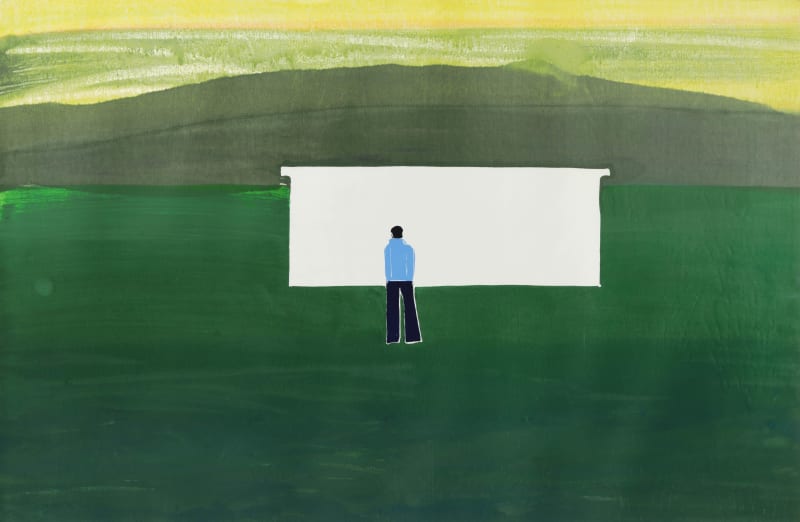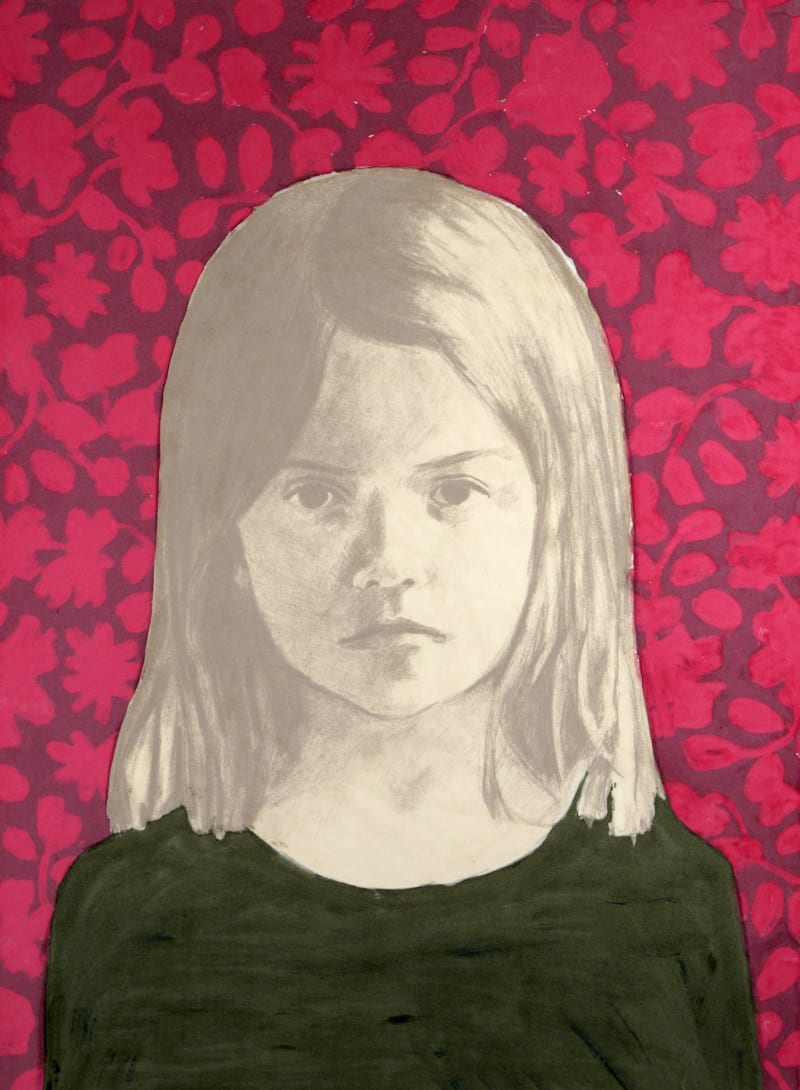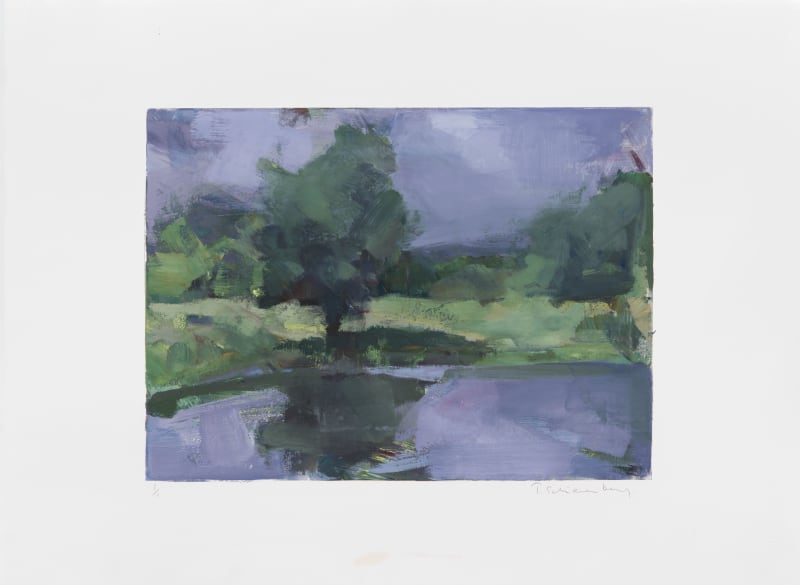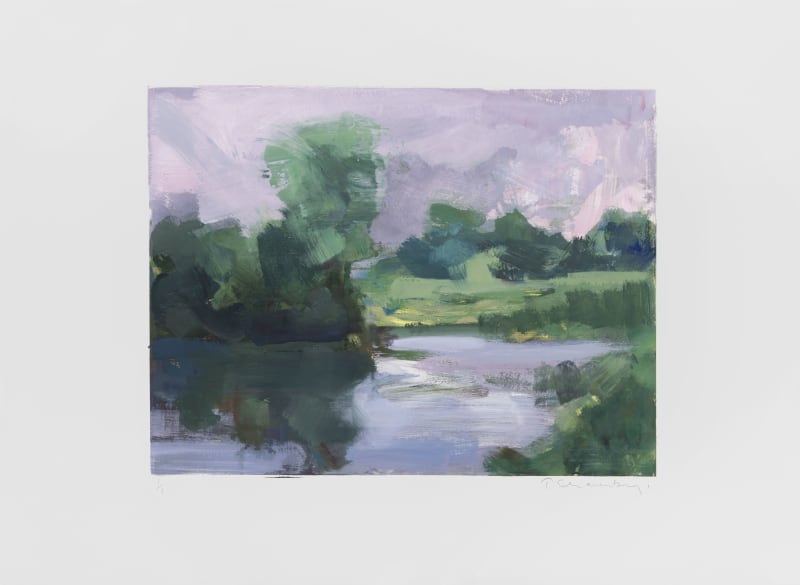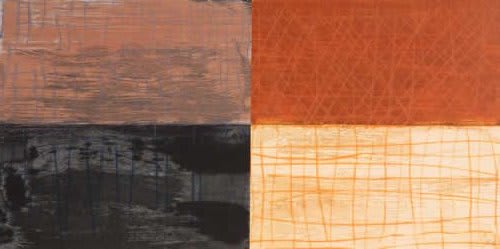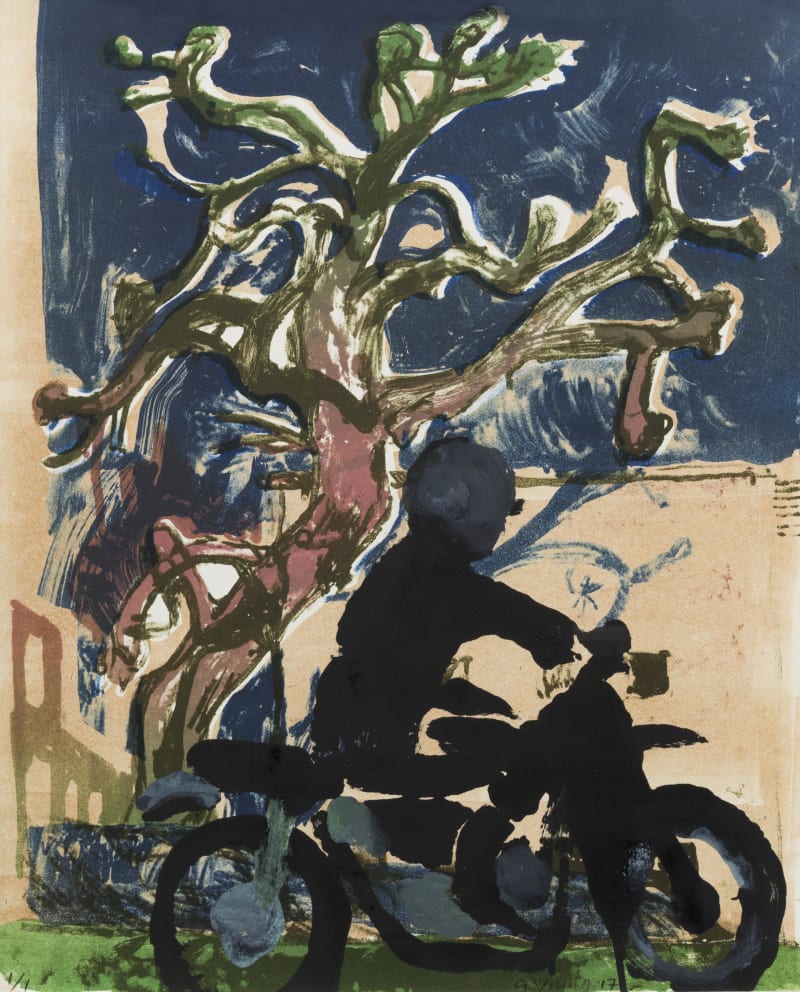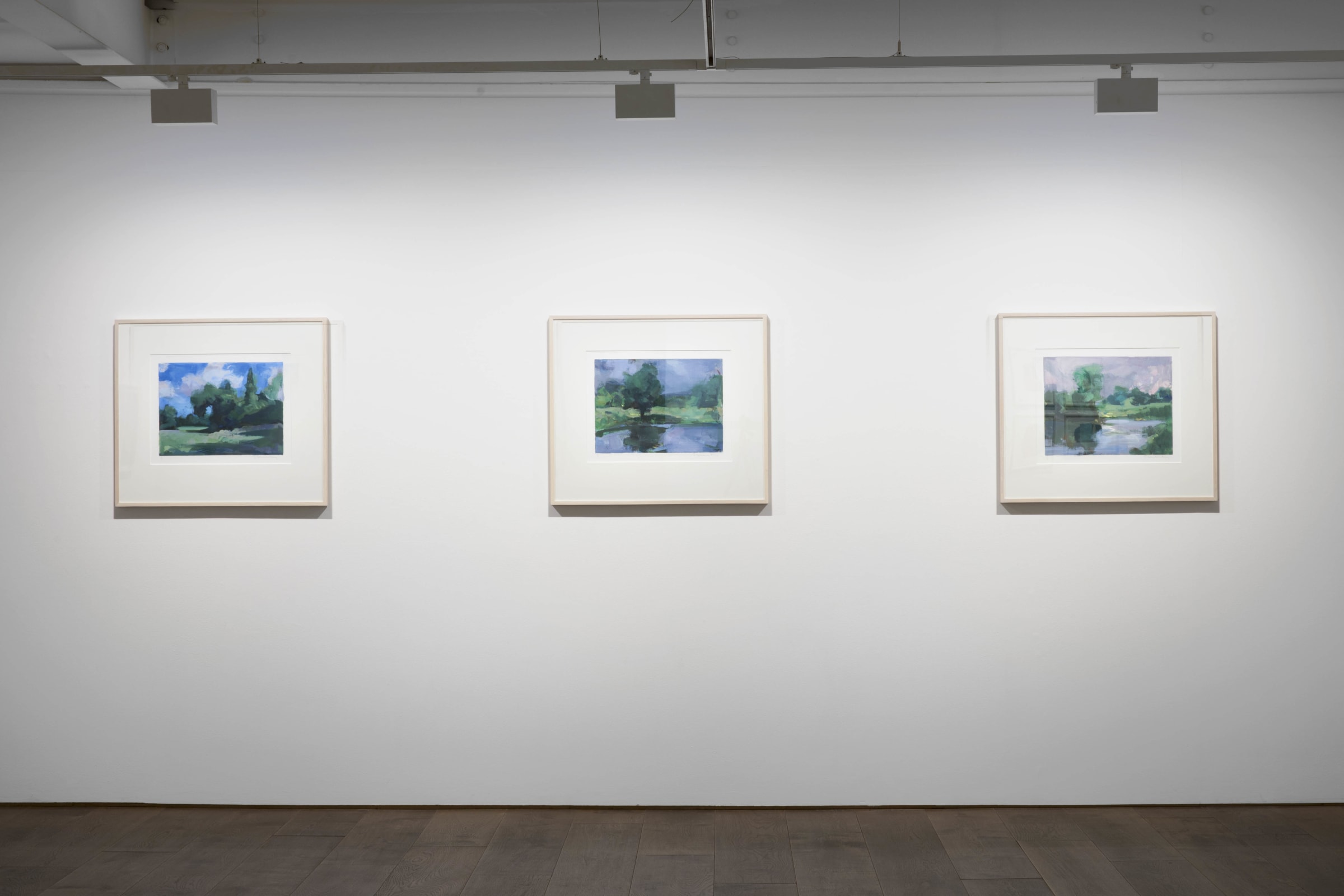
Mono
An Exhibition of Unique Prints
Overview
The exhibition will feature monoprints by over thirty artists, many of whom work primarily in other media. The term monoprint or monotype is applied to prints that are completely unique, of which only a single copy is produced. This way of working often allows the artist freedom to explore new ideas and techniques which may then go on to inform their wider practice.
Mono: An Exhibition of Unique Prints will be on view at Flowers Gallery from 7 July - 9 September at Flowers Gallery, 82 Kingsland Road, London.
An extended selection of Monoprints and Monotypes, along with all works in the exhibition, will be available to purchase online. Visit the Online Shop here.
The exhibition will feature monoprints by over thirty artists, many of whom work primarily in other media. The term monoprint or monotype is applied to prints that are completely unique, of which only a single copy is produced. This way of working often allows the artist freedom to explore new ideas and techniques which may then go on to inform their wider practice.
“I can be brave and experimental with a monoprint. If it doesn’t work out I tear it up and make another one. Or I have the option of adapting it, turning it into something else by over-printing or by making a ghost image or by adding drawn or painted additions. I make up the rules as I go along and I’m constantly surprised by what appears.”
“From any description the process of monotype would seem to be such a simple way of making a print. Literally, a one-off image is painted, rolled and scumbled onto a plate. A (usually damp) piece of paper is laid over the plate and passed through the press. The compression exerted by the press transfers the image from metal or wood to paper. But making monotypes can be frustrating, with a high rate of attrition. They are disconcertingly fiendish to pull off. Too much pressure with too thick an ink and pigment is squeezed out to resemble an asymmetrical Rorschach test. And if your paper loses its ‘size’ from being too wet, the tackiness of the ink sticks it to the plate like glue. Too damp, and the water in the paper repels the ink into clotted patterns. Too dry and the ink is not sucked out of the plate one is transferring the image from. When it all goes right, the process is pure Zen. The softness and directness can conjure up the immediacy between an idea and internal vision of an artist and its manifestation into the world. And it is a medium particularly suited to painters.”
“I love working with materials in which the process is somewhat all about discovery, not fully known. Printmaking is all about being present in the moment and of noticing the things that have happened. I make prints to take myself out of myself – away from known drawing marks. You might find that you’ve made an eye socket, a cheek bone out of something that’s smudged. I notice that and I take it away and use it in a drawing, but I couldn’t have intentionally made it happen.”
“I have made monotypes all the way through – from taking impressions from plate glass in my MFA studio at Reading (in 1974), through to taking prints off two old metal warehouse doors in St Johns Wharf in Wapping (in 1984), up to the large monotype you see in this show, made from impressions off a large piece of painted mdf, and using a variation of the Tonking process (which is handy for taking of the top skin of oil paint and re-printing it somewhere else). Like everything in my work it is both an improvised way of mark making yet with a methodology and structure that keeps it sure. I have used oil paint, gloss paint, and printing ink on a wide variety of monotypes, sometimes in monochrome, sometimes in polychrome – sometimes with whatever is at hand.”
“All of [my] prints feed into my overall drawing practice, both on paper and as installations. I visit the print studio regularly to test out composition, colour and pattern. The ideas explored in the print studio often appear in the wall and window drawings. Screenprinting in particular is very immediate and provides me with the opportunity to think through an idea via multiple variations of the same structure. The ‘Arc’ prints are the most literal translation of the idea of a monoprint. They are made by placing paper on a sheet of inked up glass, and drawing onto the back of the paper. The paper is prepared with a grid of marked out points that guide me where to locate the compass. At each point I increase the diameter of the circle in accordance to my system. Each print, has a different order in place, that allows the circles to increase in size. As they grow the curves stretch out, flatten and begin to interlock. I’m interested both the qualities of line created by the increase in size but also it’s relationship to the drawing tool. The compass enforce a rule or structure to the line, however this rigidity is exploited by the ink medium and the quality of the paper. The monoprint process picks up all traces of pressure; therefore what would normally be a hard line is softened by the action of drawing in this medium. The traces of the artist’s hand can be seen on the surface of the paper and tell tale details such as the pin prick of the compasses point. Many of these prints are made in sets that explore of growing intervals of circles with warming or cooling tones of colour.”
“For me, the excitement of producing monoprints comes from putting obstacles in the way of making the image, and allowing accidents to happen. I paint the image onto a screenprinting screen, and squeegee it onto Somerset printing paper. I repeat this process, layering many versions of the same image, so that the finished print is an accretion of multiple interpretations; which parts of images stay visible or are obliterated or meld in the process, is left to chance. As an artist, you leave ideas behind as you advance, but you can lose interesting tools along the way and sometimes need something else, a different medium say, to remind you to look back.”
"Screen-printing is normally quite a literal process. Baked emulsion blocks areas of the screen and areas are left clear where the stencil has prevented the emulsion from baking. This is your image. The ink is squeegeed through on to the paper and the marks that have been made on the stencil (generally paint on acetate for me) are faithfully reproduced the right way round. Each layer is one tone, one colour, smooth and flat, any texture is an illusion, just a faithful reproduction of the shape of each mark on the stencil. The excitement and accident lie in the building up of layers. Each beautiful accident revealing itself slowly. For me proofing a screen print is like the making of a painting slowed down, dissected and extended. Like playing a record on very slow speed. Mono printing flips the turntable setting to high speed. Paint is applied hastily to the screen, all areas covered in one go, many colours, many brushes: Chaos. Speed is of the essence to prevent the ink form drying and blocking the screen. The ink lies thick and impasto on the screen looking like a crude decoration on a cake. The squeegee drags the ink across the screen pushing it through to the paper below. Looking through the screen now, the image flat on the other side of the screen is the first clue to all the accidents and surprises that have happened, before lifting the screen and the big reveal. Ink can be reapplied to the screen, corrections and manipulation attempted, using the stained silk as a guide, in order to take a fresh impression. But it is not long before the screen must be cleaned and you must begin again. For me the business of painting, screen-printing and mono printing lie in the unknown spaces between intention and actuality, the intensity of discovering and inhabiting that space. It is the varying perimeters of these spaces that most define the different practices for me."
"What is the difference between a monoprint and a monotype? There seems to be some debate about this and no clear consensus. It has been suggested that a monoprint is a singular, one-off imprint whereas a monotype is more fluid. So, when making a monotype I set myself some guidelines. I allow a maximum of three imprints from one plate - an initial imprint, a ghost, or cognate, and a second ghost. These are usually imprinted on grounds that have been built up over a period of weeks in different layers. Each imprint can be worked on and manipulated after printing but only up to a point as too much of this will make it cease to be a monotype and more like a painting. Knowing when to stop can be difficult. The important thing is that after the three imprints are taken the painted image on the plate is wiped away with turps so it ceases to exist except as a series of unique imprints on paper. The failure rate is very high but when it all comes together the results can be wonderful."
Artists in this exhibition include George Blacklock; Samantha Cary; Stephen Chambers; Prunella Clough; Eileen Cooper; William Crozier; Ken Currie; Betsy Dadd; Bob Edgson; Julia Farrer; Anthony Frost; Terry Frost; Naum Gabo; Fiona Grady; Susie Hamilton; Tom Hammick; Nicola Hicks; Peter Howson; Albert Irvin; Alice Irwin; Claerwen James; Lucy Jones; John Keane; John Kirby; John Loker; John McLean; Lisa Nicchi; Freya Payne; Tom Phillips; Carol Robertson; Michael Sandle; Tai Shan Schierenberg; Francesca Simon; Richard Smith; Arturo di Stefano; Trevor Sutton; Alison Watt and George Young.
The exhibition will feature monoprints by over thirty artists, many of whom work primarily in other media. The term monoprint or monotype is applied to prints that are completely unique, of which only a single copy is produced. This way of working often allows the artist freedom to explore new ideas and techniques which may then go on to inform their wider practice.
Works






















